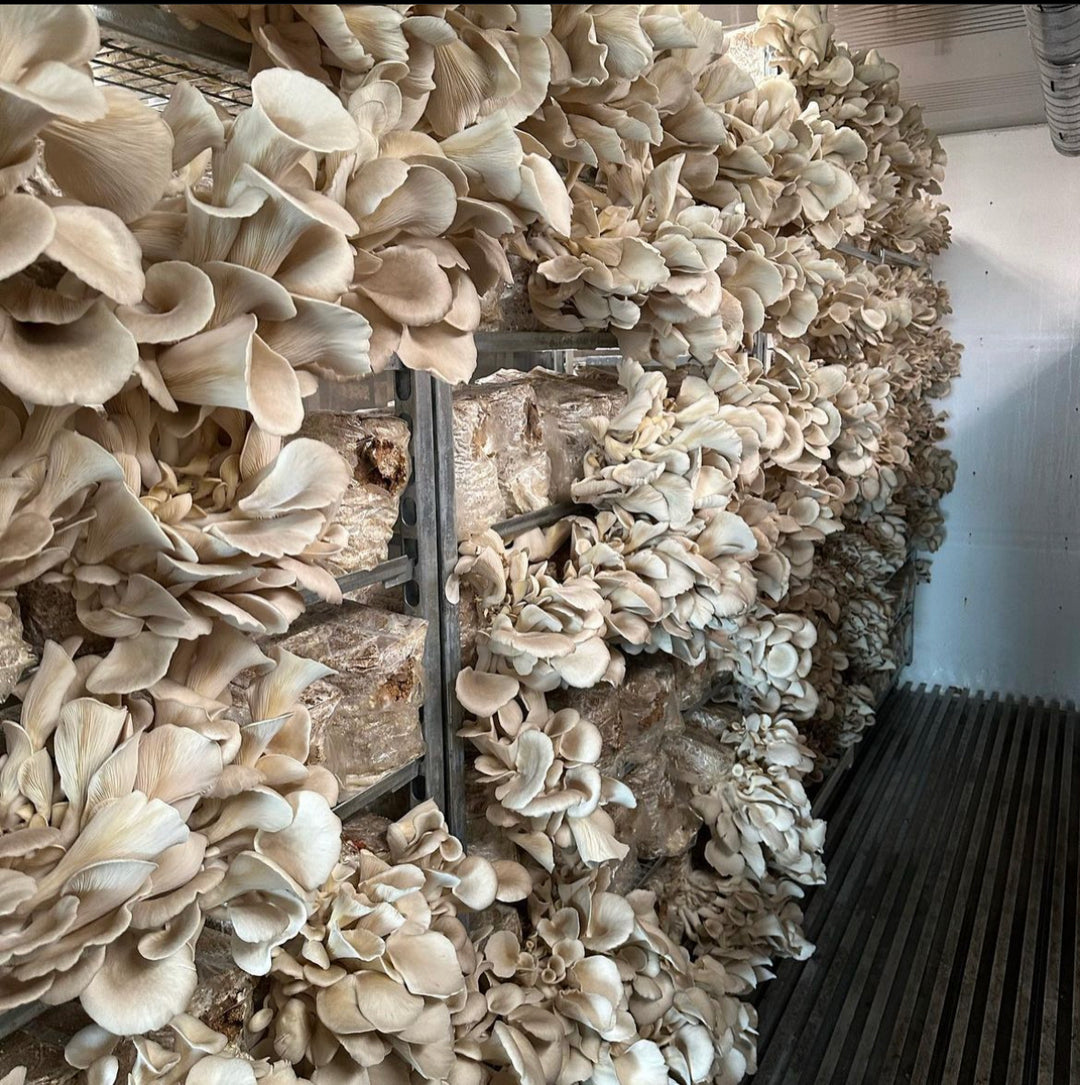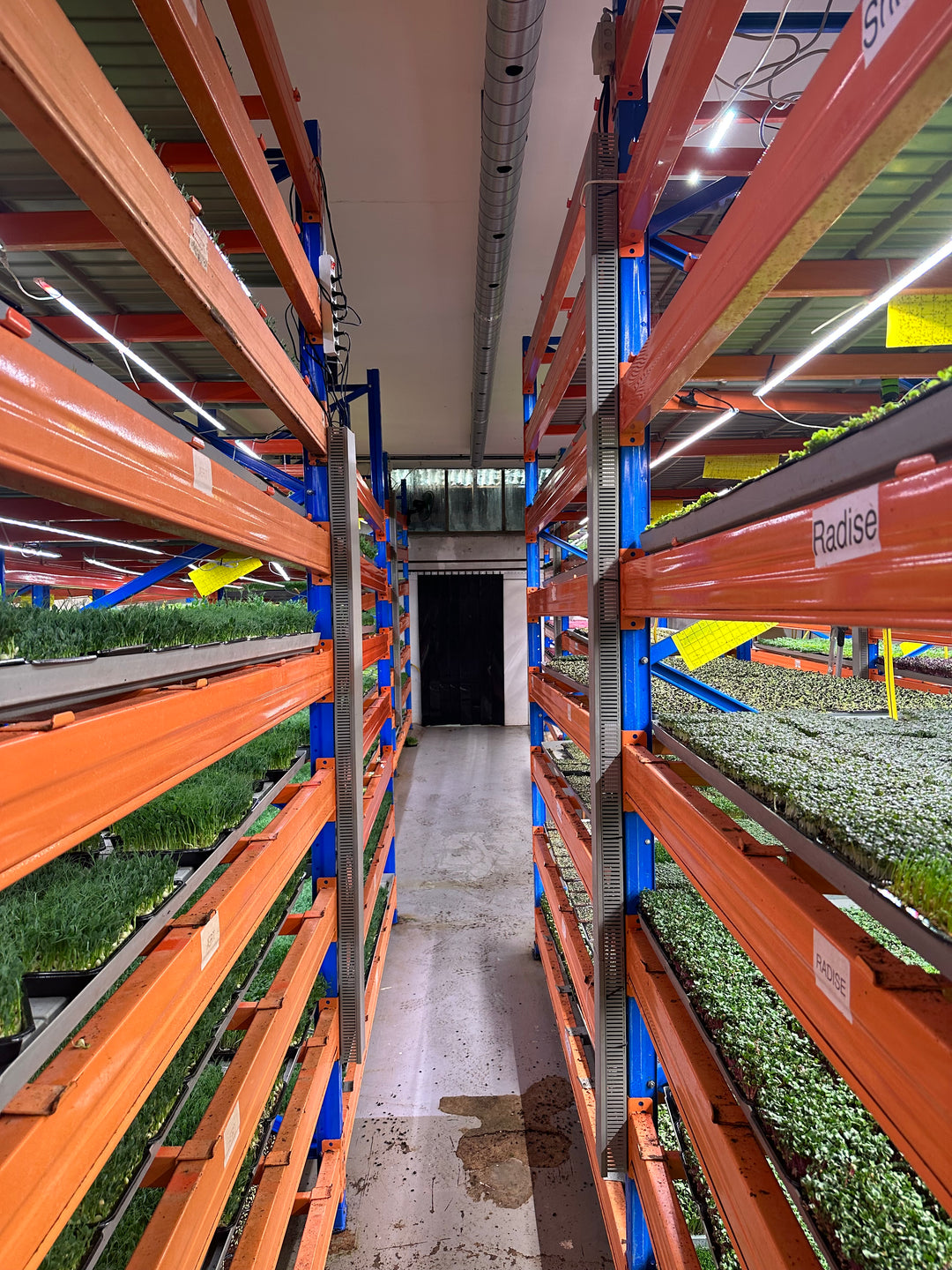Green and Clean: Why Indoor Farming Drastically Reduces Pesticide Use

One of the most compelling advantages of growing plants in an indoor production
environment, like a vertical farm or a hydroponic system, is the dramatic reduction—and
often complete elimination—of synthetic pesticides. This isn't just a desirable outcome; it's
an inherent benefit stemming from the fundamental design and control capabilities of these advanced agricultural systems. To understand why, we need to compare it to the challenges faced by traditional outdoor agriculture.
The Pesticide Predicament in Traditional Farming
In conventional field farming, crops are exposed to a vast and unpredictable array of threats:
● Open Exposure: Fields are open to the elements, making them vulnerable to
insects, fungi, bacteria, and weeds from the surrounding environment.
● Environmental Variability: Fluctuating temperatures, humidity levels, rainfall, and
wind can create ideal conditions for pest outbreaks or stress plants, making them
more susceptible to disease.
● Soil-Borne Pests and Diseases: Many pathogens and insect larvae reside in the
soil, posing a constant threat to plant roots and emerging seedlings.
● Wide Dispersal: Pests and diseases can easily spread across large fields,
necessitating broad-spectrum treatments to contain them.
● Limited Control: Farmers have limited ability to physically isolate plants or precisely
control their immediate environment.
These factors often lead to a reliance on chemical pesticides and herbicides, which, while
effective in controlling pests, carry significant downsides:
● Environmental Contamination: Runoff can pollute waterways, harm beneficial
insects (like pollinators), and degrade soil health.
● Human Health Concerns: Residues on produce can pose health risks to consumers
and farm workers.
● Pest Resistance: Continuous use of chemicals can lead to pests developing
resistance, necessitating ever-stronger or new pesticides.
● Economic Cost: Pesticides represent a substantial expense for farmers.
The Indoor Advantage: Building a Pest-Resistant Fortress
Indoor production fundamentally changes the equation by creating a controlled
environment agriculture (CEA) system. This inherent control acts as the primary barrier
against pests and diseases, rendering extensive pesticide use largely unnecessary.
Here's how:
1. Physical Isolation and Exclusion:
○ Sealed Environments: Indoor farms are typically housed in enclosed
buildings, warehouses, or specially designed structures. This acts as a
physical barrier, preventing most external pests—like aphids, whiteflies,
spider mites, and larger insects or rodents—from entering the growing area.
○ Air Filtration and Air Locks: Many advanced indoor farms employ
sophisticated air filtration systems (HEPA filters) and airlocks at entry points,
similar to cleanroom technology, to prevent microscopic spores, airborne
pests, and pathogens from infiltrating.
○ Sterile Growing Media: In hydroponic or aeroponic systems, plants are
grown without traditional soil. This eliminates soil-borne pests (like
nematodes, slugs, or certain fungi) and weed seeds that are a constant
challenge in field agriculture. Growing media like rockwool, coco coir, or inert
substrates are often sterilized before use.
2. Optimized Environmental Conditions:
○ Precise Climate Control: Indoor farms meticulously control temperature,
humidity, and CO2 levels. Pests and pathogens often thrive within specific
environmental windows. By maintaining conditions that are ideal for the plant
but suboptimal for common pests, their proliferation is naturally discouraged.
For example, some fungi flourish in high humidity, which can be precisely
managed indoors.
○ Targeted Airflow: Controlled airflow and ventilation prevent stagnant air,
which can promote fungal growth, and help to disperse heat and humidity
evenly.
3. Proactive Monitoring and Early Detection:
○ Constant Surveillance: Indoor farms utilize sophisticated sensor networks,
cameras, and even AI-driven imaging systems to constantly monitor plant
health and environmental parameters.
○ Early Warning Systems: Any deviation from optimal growth or the slightest
sign of stress or pest presence can be detected very early, often before an
infestation takes hold. This allows for immediate, targeted intervention.
○ Sticky Traps and Visual Inspections: Even with advanced tech, simple
methods like sticky traps are used to monitor pest populations and identify
specific threats early.
4. Integrated Pest Management (IPM) as a Primary Strategy:
○ Since broad chemical sprays are largely avoided, indoor farms are perfect
candidates for robust IPM programs, which prioritize prevention and
non-chemical solutions:
■ Biological Control: Introducing beneficial insects (e.g., ladybugs for
aphids, predatory mites for spider mites) that are natural enemies of
common pests. In a contained environment, these beneficials are
highly effective and can quickly control pest populations without
harming the crop or the environment.
■ Cultural Controls: Strict sanitation protocols (disinfecting tools, grow
trays, and surfaces), proper plant spacing for air circulation, and
quarantining new plant material are fundamental preventive
measures.
■ Physical Controls: Traps (sticky traps, pheromone traps) are used
for monitoring and sometimes mass trapping. UV light traps can also
be effective for certain flying insects.
■ Targeted Biopesticides (as a last resort): If an issue arises despite
preventive measures, indoor farmers might use highly targeted
biopesticides derived from natural sources (e.g., plant extracts,
beneficial microbes) rather than broad-spectrum synthetic chemicals.
These are often pest-specific and less harmful to beneficial
organisms.
5. Soilless Cultivation (Hydroponics/Aeroponics):
○ By eliminating soil, indoor farms inherently bypass many soil-borne pests and
diseases that can devastate crops in traditional agriculture. This removes a
critical entry point for pathogens.
The Outcomes: Cleaner, Safer, More Sustainable Produce
The cumulative effect of these controlled environment strategies is a dramatic reduction in
the reliance on pesticides. This translates into:
● Pesticide-Free Produce: Consumers can enjoy fruits, vegetables, and herbs that
are free from harmful chemical residues, leading to healthier food options.
● Environmental Protection: Eliminating pesticide runoff protects local water sources,
biodiversity, and the health of surrounding ecosystems.
● Worker Safety: Farm workers are not exposed to hazardous chemicals.
● Predictable Quality: Healthier plants, unburdened by pest damage or chemical
stress, consistently produce higher quality and more aesthetically pleasing crops.
● Brand Trust: For indoor farming companies, the ability to guarantee pesticide-free
produce is a significant market differentiator and builds consumer trust.
In essence, indoor production acts as a controlled biological bubble. By preventing pests and pathogens from entering and creating an environment where they struggle to thrive, the need for chemical intervention becomes minimal, making indoor farming a truly "green and clean" method of food production.


